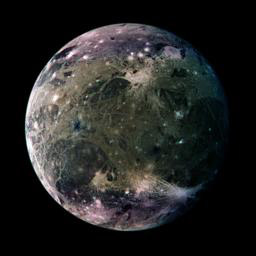This is an image of Ganymede.
NASA
Ganymede
Ganymede was first
discovered by Galileo in 1610, making it one of the
Galilean Satellites. Of the 60 moons it is the 7th closest to Jupiter, with a standoff distance of 670,900 km. It is the largest moon in the solar system, much larger than the Earth's moon, with a diameter that is about the distance across the United States, of 5262 km (3270 miles).
Ganymede is named after Jupiter's favorite cup bearer, from Greek/Roman mythology. Ganymede is one of the Icy Satellites, meaning that it is mostly made of ice. Its main characteristic is the grooved terrain on its cratered surface.
The Galileo spacecraft made an amazing discovery-- this moon, which is larger than the planet Mercury, generates its own magnetosphere, one that is bigger than Mercury’s magnetosphere. Ganymede also has a very thin atmosphere.
You might also be interested in:
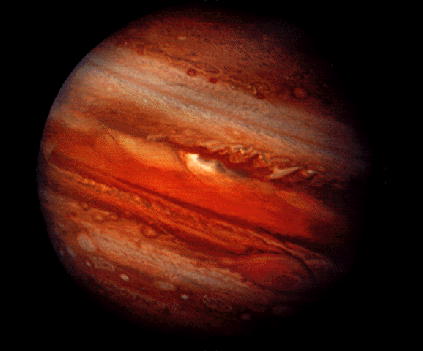
Jupiter is the largest planet in our solar system. It is also one of the brighter objects in the night sky. No one knows for sure who discovered Jupiter, but we know the ancient Greeks named him after
...more
The Galilean satellites are the 4 major moons of Jupiter, Io, Europa, Ganymede, and Callisto. In this picture, Io, and Io’s surface, are shown on the left-most end, then Europa, and its surface, then Ganymede,
...more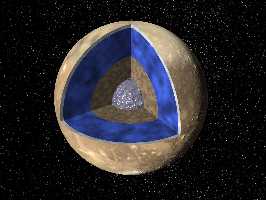
The diagram to the left shows a cutaway of the possible interior structure of Ganymede, based on recent measurements by the Galileo spacecraft. It shows a small core of metal, overlain with some rocky
...more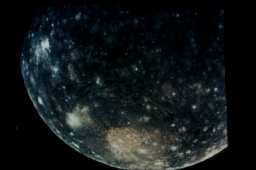
The surface of Ganymede is halfway between that of Callisto and that of Europa. Portions of the crust are of ancient age, while other portions are relatively new. The little white dots shown in this image
...more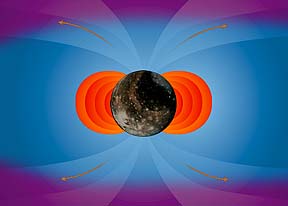
When the Galileo spacecraft flew by Ganymede, to everyone's surprise, it measured a very strong magnetic field for the first time near any moon. To generate a magnetic field, there must be conducting material
...more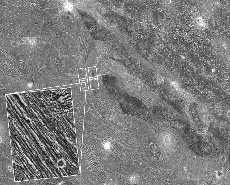
There has been no icy volcanism on Ganymede, but it does seem that there has been a kind of tectonism, or surface motion. Examination of the surface of Ganymede reveals many kinds of faulting and fracture.
...more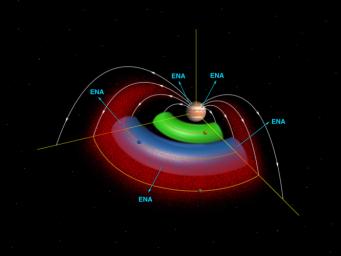
The Galileo mission discovered an amazing thing. Europa has its own atmosphere, although it is very, very thin. This atmosphere is created when fast moving molecules in Jupiter's magnetosphere hit the
...more
